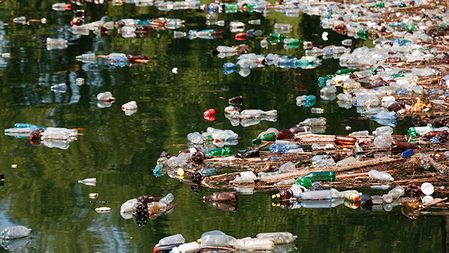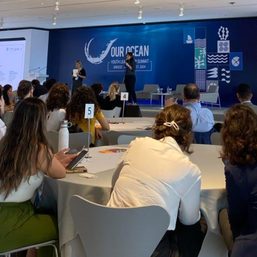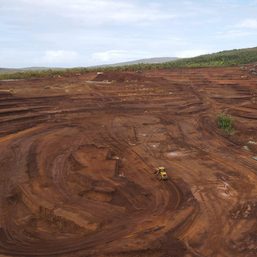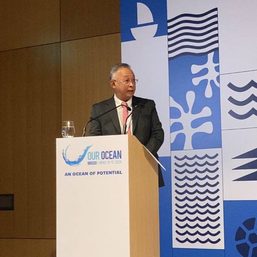SUMMARY
This is AI generated summarization, which may have errors. For context, always refer to the full article.
![[OPINION] The country’s plastic crisis is an issue of justice](https://www.rappler.com/tachyon/2021/05/imho-country-plastic-1280.jpg)
Our planet has been grappling with plastic pollution for years. It has only been in recent years, however, that its impacts beyond environmental destruction have been given proper attention. While most recognizable in ecosystem and biodiversity degradation, plastic pollution has also quietly and slowly wrought irrevocable damage on communities and people’s lives.
The recently released UN Environment Program report, “Neglected: Environmental Justice Impacts of Marine Litter and Plastic Pollution,” reveals the harms that it causes – from health risks and greenhouse gas (GHG) emissions to contaminated food supplies and systematic exclusion and oppression of groups. The issue of plastic pollution has become a full-blown crisis with implications on health and environmental justice.
Despite all of these, most people still see the plastic crisis as a one-dimensional problem about waste and individual responsibility. What we see in the news and on our social media feeds echo that perception. Photos of marine animals choking on plastic, flooded streets after a storm, PPEs in our waters, and piles of plastic from e-commerce deliveries – all of these depict plastic pollution in the form of waste. While these are a constant reminder of the urgency of the matter and the need for action, they also provide a limited view of the plastic crisis.
The plastic crisis encompasses the entire life cycle of plastic, and governments and corporations must be held accountable. From the very beginning and through every stage of its life, plastic has caused environmental contamination, dangerous emissions, and other societal issues. The entire system of plastics clearly has serious consequences on people’s rights, health, food, and livelihoods, especially of the marginalized.
The environmental justice impacts of plastic are all too often overshadowed by wildlife harms or jarring pollution of beautiful environments. Once viewed from this life cycle perspective though, it is hard to ignore all the different ways plastic is harming people, particularly already vulnerable groups.
Phases with faces
One of the most notable cases is the role plastics play in emitting GHGs that has led to accelerated climate change. From oil extraction, to manufacturing and transportation, to waste management, the plastics industry is responsible for 400 million tons of GHGs every year. This is more than the emissions of the entire Philippines, and higher than the pollution of all but 16 countries.
This places the global plastic industry among corporations and other high-emitting entities that are accountable in the context of climate justice. Aside from its direct pollution of the environment, GHGs emitted throughout its life cycle contribute to intensifying strong storms, droughts, sea level rise, and other manifestations of climate change. These result in biodiversity and ecosystems decline and immeasurable losses for high-risk communities, especially in a nation as vulnerable as the Philippines.
With plastic producers having largely avoided dealing with their discarded products, numerous sectors are exposed to the harmful effects of plastic waste and left to deal with their disposal. For instance, only 9% of all plastics ever produced have been recycled worldwide. The growing plastic production and usage places immense burden on recycling facilities. As a result, excess waste from recycling facilities of developed countries is shipped off to lower-income nations, including the Philippines.
Waste pickers from poor communities then manually segregate recyclables, including single-use plastics. However, they are constantly exposed to health hazards within these garbage piles. If left untreated, plastic waste breaks down contaminating soils and waters with toxins that also place nearby neighborhoods at higher risk of cancer, cardiovascular diseases, and other illnesses.
Some are advocating for incineration to reduce the volume of plastic waste. In fact, more plastics are incinerated (12%) than recycled, especially in developing nations that lack a strong centralized waste management system. However, incineration of plastics causes the release of persistent organic pollutants (POPs), carcinogens which can damage organs such as lungs. These are found in fly ash, a hazardous waste produced from the burning process and expensive to properly manage.
In the Philippines, some lawmakers are pushing for the repealing of a clause in the Clean Air Act to legalize incineration and promote waste-to-energy plants. Repealing that provision and the continued poor implementation of air quality standards and other environmental regulations will expose many Filipino communities to economic and health-related losses, reminiscent of coal-fired power plants.
Unbeknownst to many, women are more exposed to the harmful effects of plastics. As they tend to often handle household matters, its increasing presence in daily life has also increased their exposure to toxic additives. Women in warm climates have a higher risk of exposure, as POPs are released into the environment at higher temperatures. Another additive, phthalates, is common in cosmetic and feminine care products that may heighten the risk of pregnancy losses and birth defects.
Filipino fisherfolk communities are also among the most affected by the plastics crisis. The Philippines is one of the 20 worst plastic polluters of oceans, which collectively produces 83% of marine plastic litter. Lower fishing yields, polluted waters, and obstructive debris are among the plastics-related threats facing this sector, compounded by destructive fishing practices. As fisheries provide a protein source in the country, millions of Filipinos are at risk of ingesting microplastics, which may be consumed by wild and farmed fish.
It seems hard to imagine a world without plastics. But the truth is, it has had a large presence and impact on Philippine society for only about 50 years. While this shows the severity and scope of its impact, it also means that a modern society without the destructive culture of plastics is possible. And it needs to start by making corporations accountable for plastic pollution’s impacts. – Rappler.com
John Leo Algo is the Deputy Executive Director of Living Laudato Si’ Philippines and a citizen journalist.
Marian Ledesma is the Zero Waste Campaigner at Greenpeace Philippines.
Add a comment
How does this make you feel?
![[OPINION] COVID-19 and the false promises of plastics](https://www.rappler.com/tachyon/2021/04/imho-covid-plastic-pollution-sq.jpg?fit=449%2C449)














There are no comments yet. Add your comment to start the conversation.